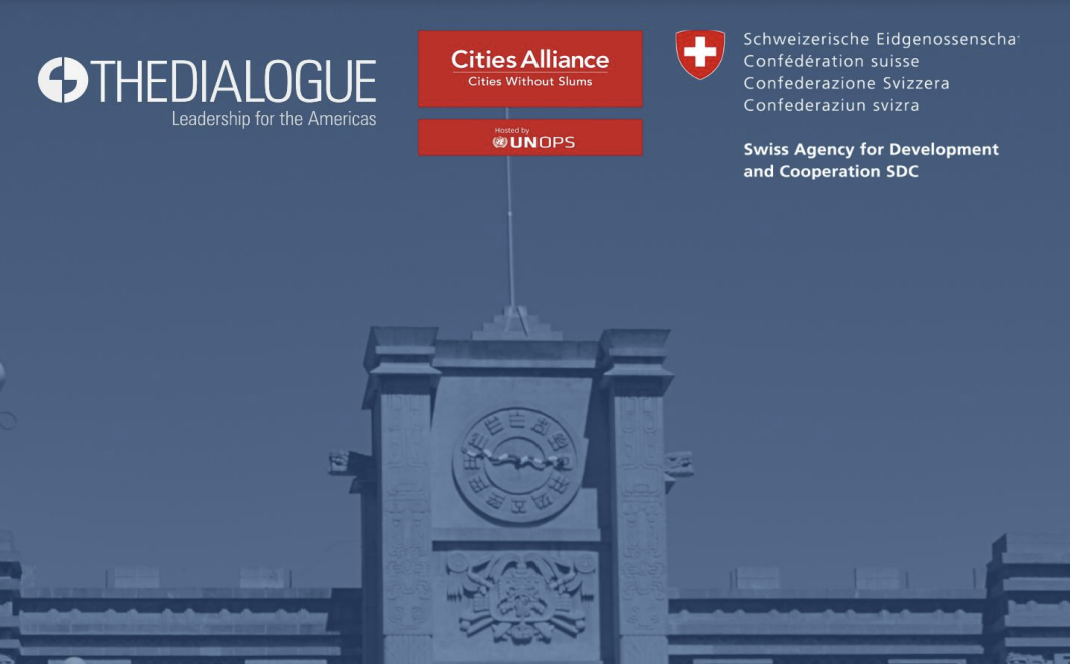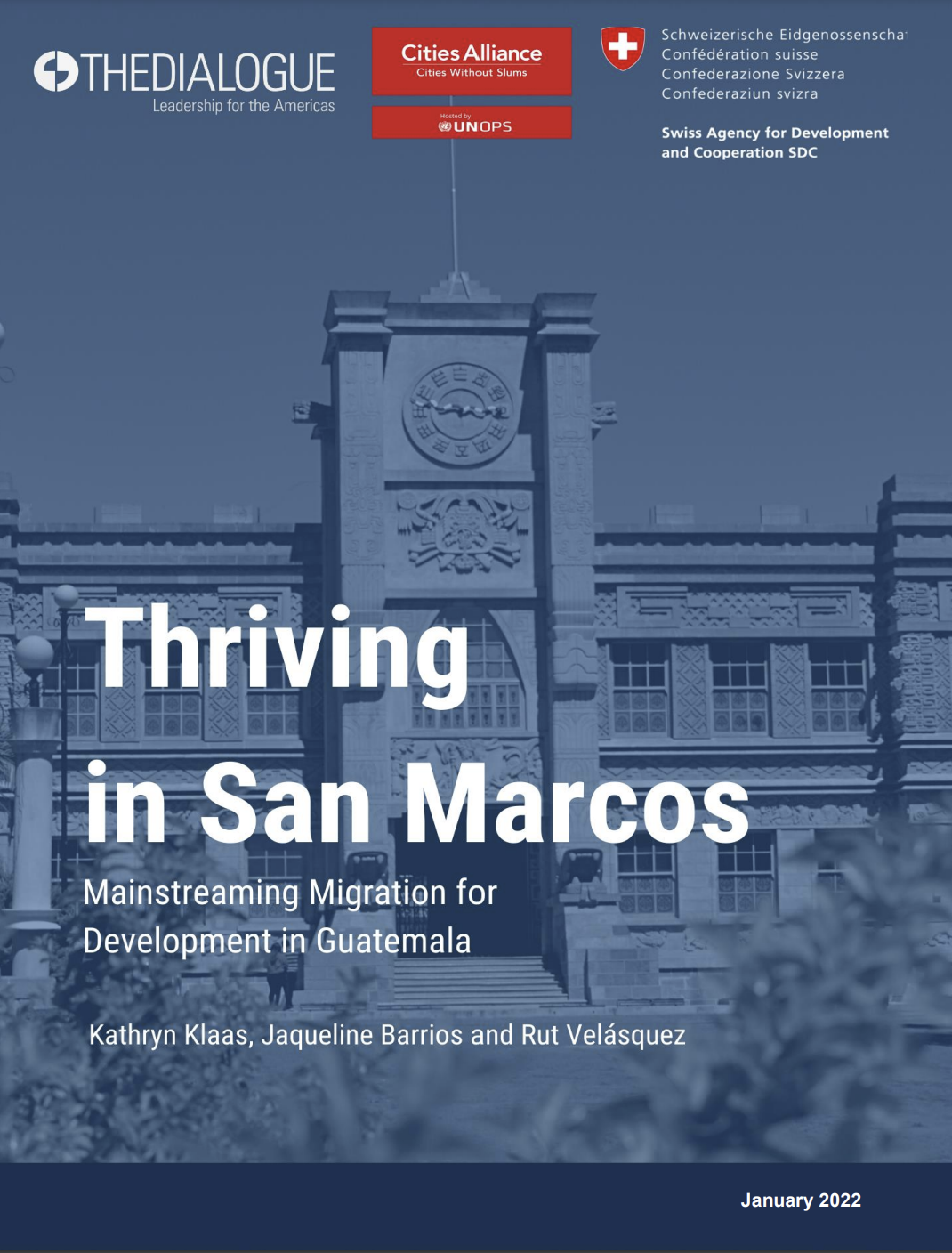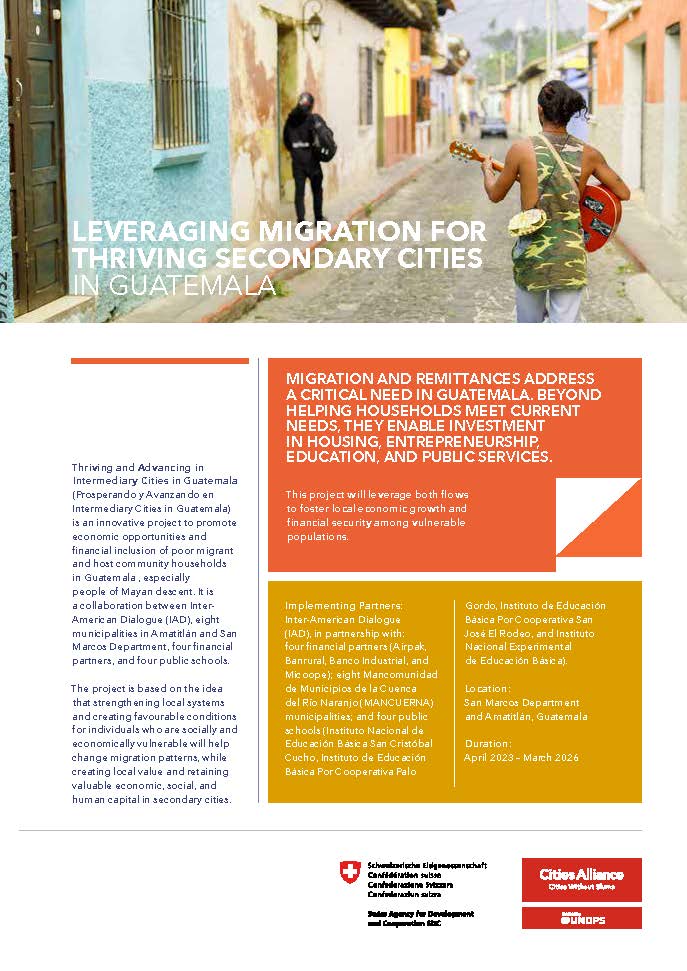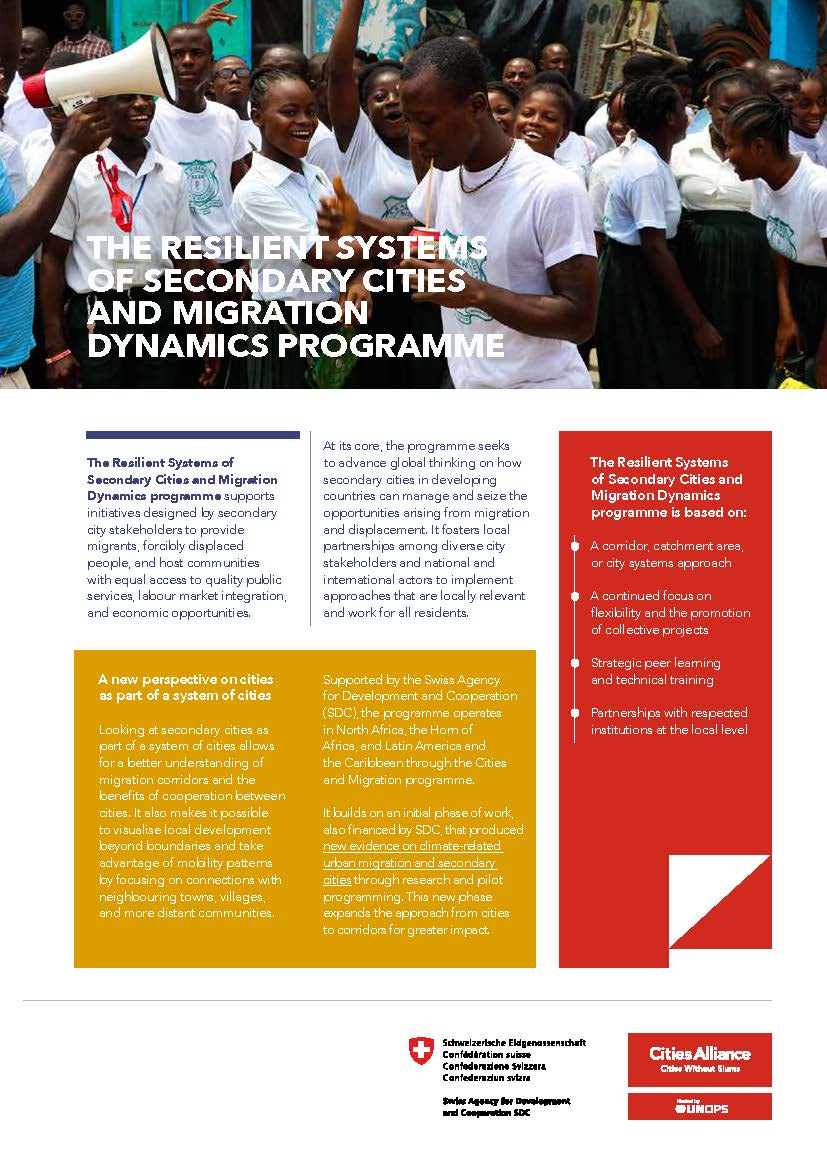- Who We Are
- How We Work
- Regional / Country Initiatives
- Legacy
- Core Themes
- Working Groups
- Portfolio & Results
- Newsroom
- Resources
Thriving in San Marcos: Mainstreaming Migration for Development in Guatemala


Guatemala’s migratory situation is complex, with shifting internal and international migration trends. Guatemala is a nation with a relatively recent history of international migration, dating back to the 1980s, but intensifying in recent years.
This move to cities is fraught with challenges, such as finding decent employment, housing, schools, and services that are already limited. It can also affect municipal-level realities such as social tensions, the creation of slums, and insecurity. It can also increase risky, irregular migration abroad.
Properly managed, however, migration from and within Guatemala can stimulate economic growth and improve livelihoods.
This report shares results from the Thriving in San Marcos initiative, which offered an innovative approach to local migration management in a targeted region of the Western Highlands. It also sought to alleviate some of the challenges posed by internal and international migration at the municipal level.
Incorporating a migration perspective into methodologies for financial inclusion, local investment, education, and capacity building achieved the following impacts:
- Over 25,000 financial education sessions held, US$ 2,400,000 in savings formalized, and over 2,200 new financial products acquired.
- Over 30 entrepreneurs received coaching to strengthen business performance.
- Nearly 1,000 youth received after-school education with a pre-professional focus.
- Over 30 local actors received training to identify pathways that leverage migration for development planning and programming in their communities.
The Thriving in San Marcos initiative was implemented in Guatemala between November 2019 and 2021 in partnership with the Cities Alliance with financial support from the Swiss Agency for Development and Cooperation (SDC).


